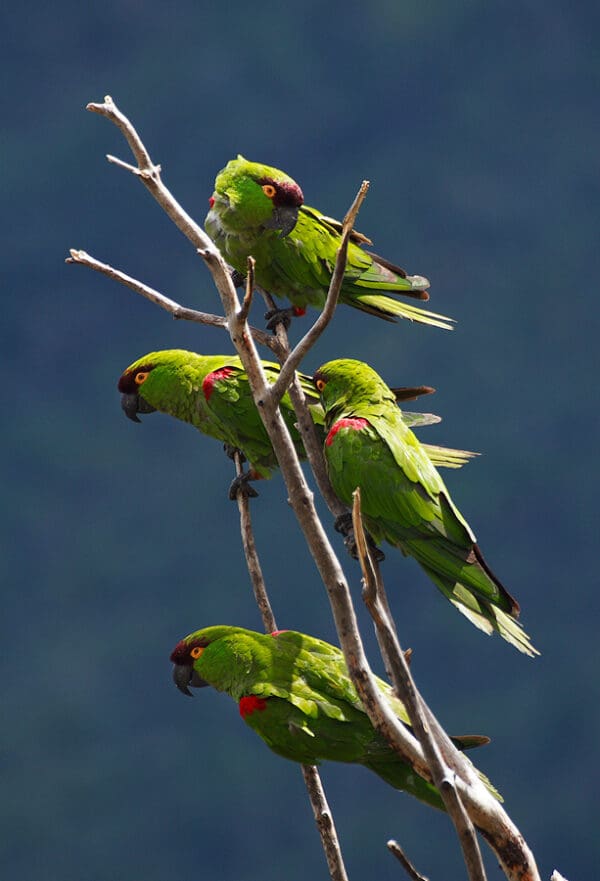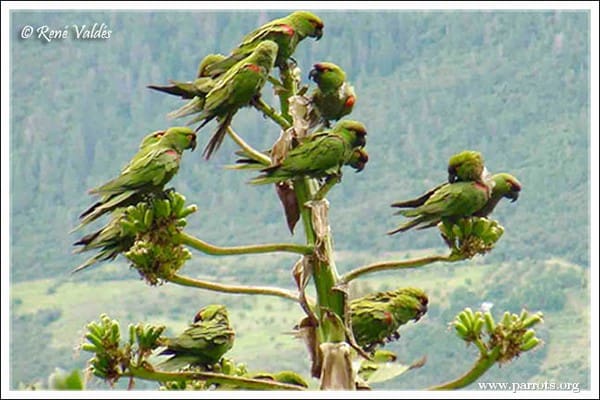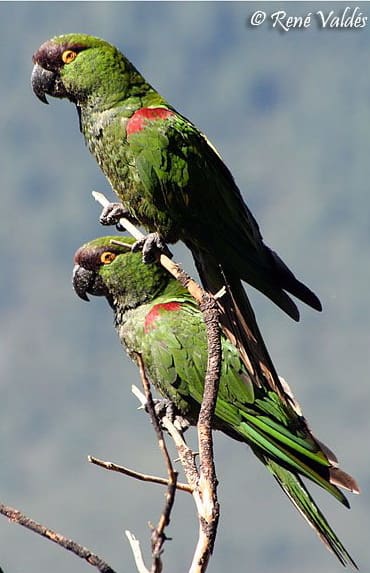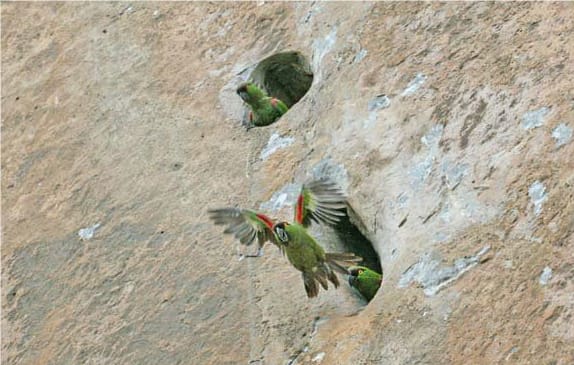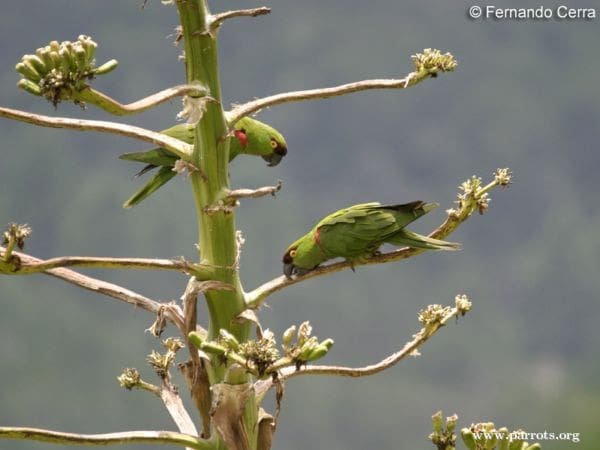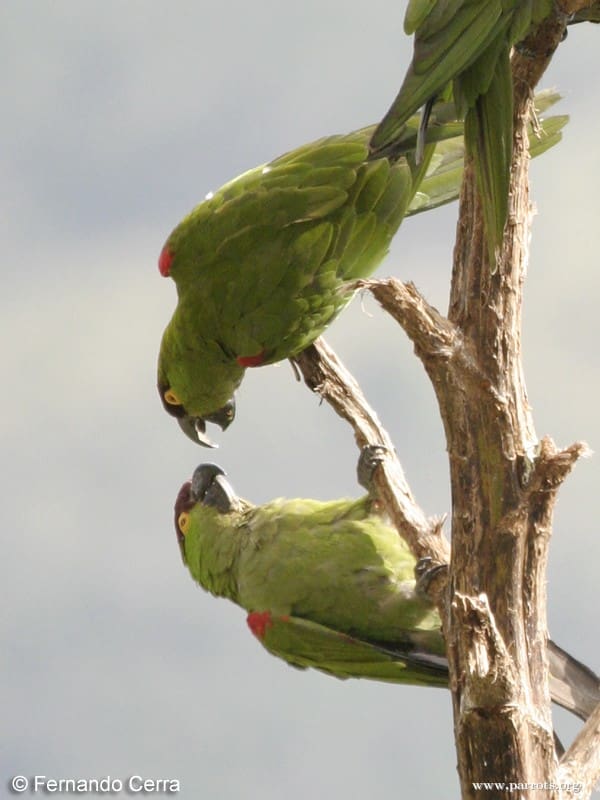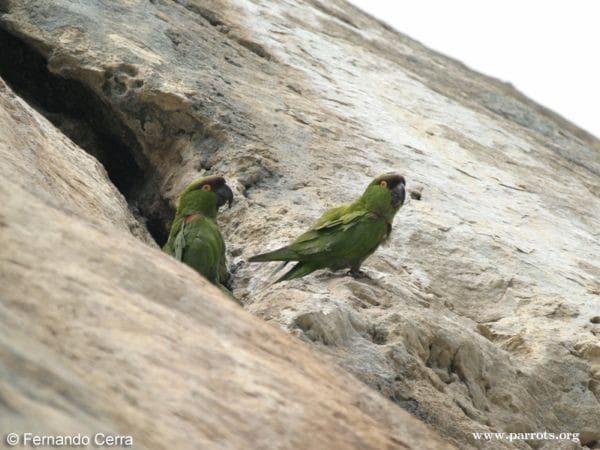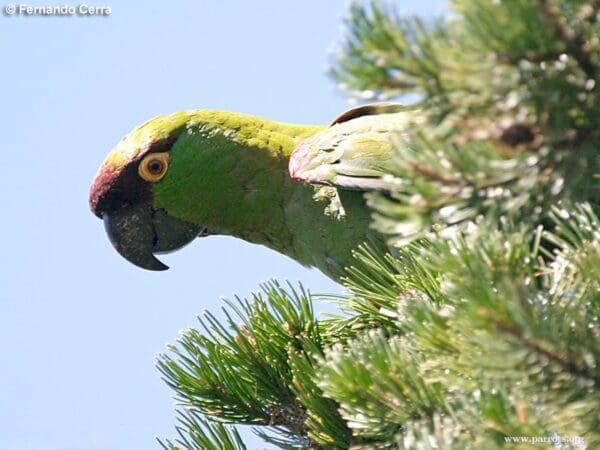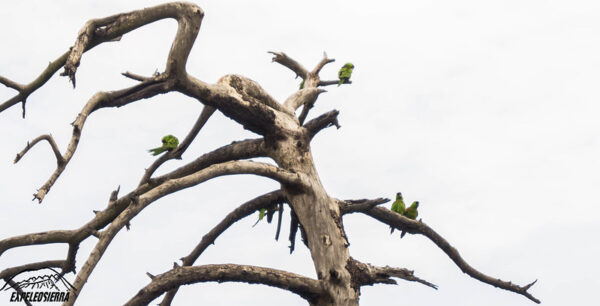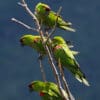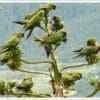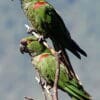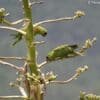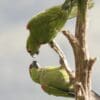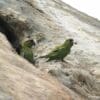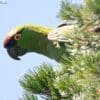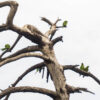Maroon-fronted Parrot
Also known as:
Maroon-fronted Macawlet
Also known as:
Maroon-fronted Macawlet
DID YOU KNOW?
The diet of the Maroon-fronted Parrot, like that of the Thick-billed Parrot, is almost exclusively pine seeds.

Rhynchopsitta

terrisi
Size:
40 cm (15.6 in)
Weight:
400-450 g.
Subspecies including nominate:
one
Colour Adult:
Both adults: dark green body, paler green on cheeks and ear coverts; forehead, forecrown dark maroon stripe; bend of wing, carpal edge and thighs dark red; greater underwing coverts grey/olive. Beak black, bare eye ring brown/yellow, eye orange/yellow.
Colour Juvenile:
As in adult but with maroon stripe absent, bend of wing and carpal edge green; less red on thighs. Beak horn-coloured with grey at base of upper mandible. Eye brown.
More Information:
Content Sources:
CITES
BirdLife International
Cornell Lab of Ornithology/Birds of the World
A Guide to Parrots of the World, Juniper and Parr, 1998
Parrots: Status Survey and Conservation Plan 2000-2004, Snyder, McGowan, Gilardi and Grajal, 2000.
Vanished and Vanishing Parrots, Forshaw, 2017.
Parrots of the World, Forshaw and Cooper, 1977.
Parrots of the World, Forshaw, 2006.
Captive Status:
Rare
Longevity:
—
Housing:
—
Diet:
—
Enrichment:
—
Nest Box Size:
—
Clutch Size:
2
Fledging Age:
—
Hatch Weight:
—
Peak Weight:
—
Weaning Weight:
—
World Population:
About 3500, decreasing.
IUCN Red List Status:
Endangered
CITES Listing:
Appendix I
Threat Summary:
The species’ range is only 1,300 km2. Is affected by loss of habitat through intensive grazing, logging and conversion to agriculture. Annual fires destroy large areas of suitable habitat, as returning vegetation is likely to be chaparral bush. Based on determinations of habitat loss, it is estimated that 15-49% of its population has been lost in Mexico during the last century. Drought fuels fires and dries up natural water sources. May experience years of low breeding success.
Range:
NE Mexico, restricted to 300km (180 mi) section of Sierra Madre Oriental in SE Coahuila, central-western Nuevo Leon, and SW Tamaulipas and sometimes to Queretaro.
Habitat:
Found at between 1300-3700 m (4264-12140 ft), in highland mix Pinus, Abies, Quercus woodland, near cliff faces for roosting and nesting.
Wild Diet:
Seeds of Pinus species: P. arizonica, P. gregii, P. teocote, P. montezumae, P. cembroides, P. strobiformis, P. culminicola and seeds of Abies and Quercus. Also taken are the nectar, flowers and fruits of Agave macroculnis and A. gentry. Visits to clay licks have been documented.
Ecology and Behaviour:
Roosts in nest while breeding but outside the breeding season communally in trees or on cliffs; gregarious and noisy; conspicuous in high long-distance (up to 40 km) flights to and from feeding areas.
Clutch and Egg Size:
2 ovate to rounded-ovate eggs, 39.5 x 30.5 mm (1.5 x 1.2 in).
Breeding Season:
July-November. Nesting is colonial in cavities and crevices in tall limestone cliffs in or near mixed conifer forests.
Related Links:
—
